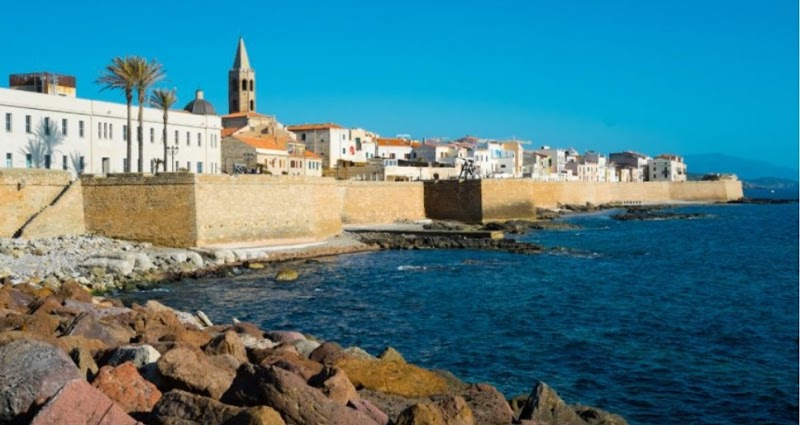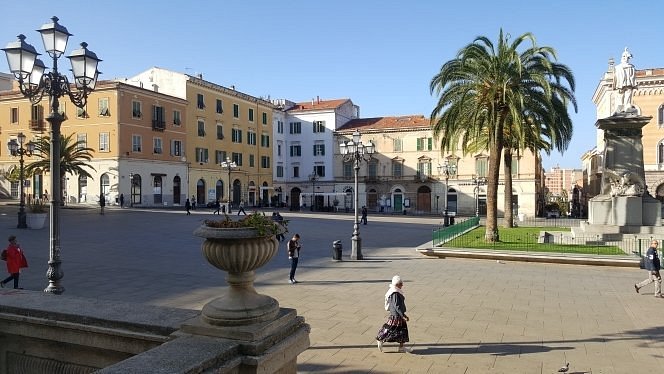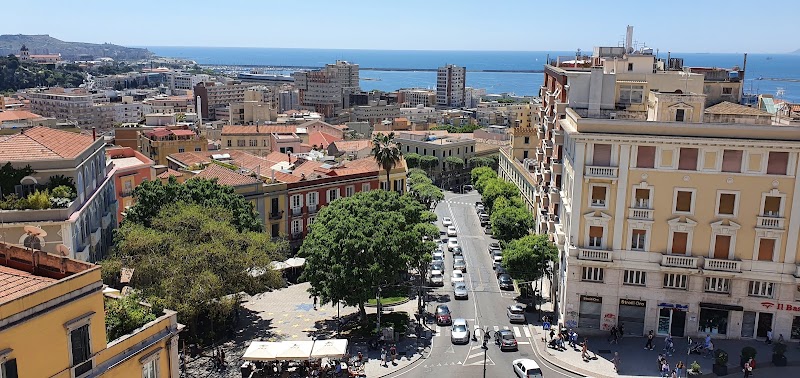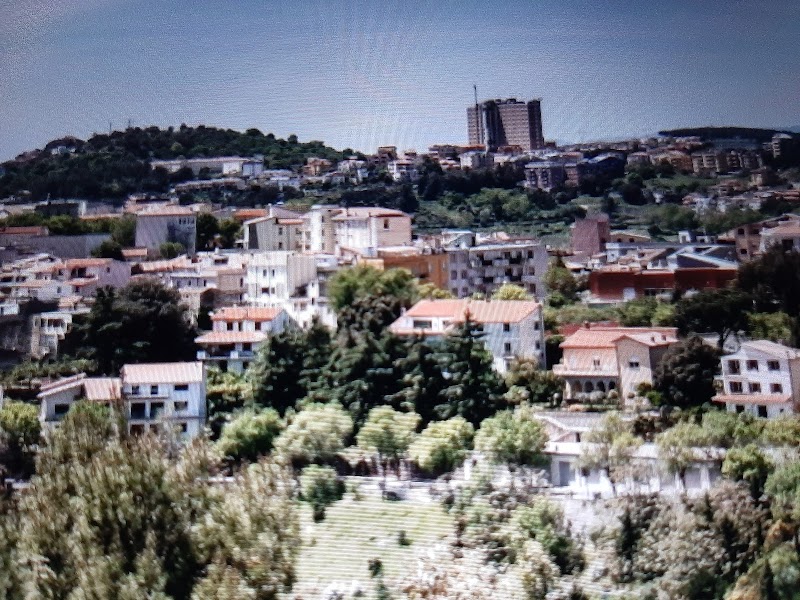Welcome to Sardinia: A Mediterranean Gem
Did you know that Sardinia boasts nearly 2,000 kilometers of breathtaking coastline, making it a haven for beach-goers? This mesmerizing Italian island offers a rich collage of experiences, from the captivating ruins of the ancient Nuragic civilization to the vibrant marine life that thrives beneath its azure waters. Whether you are a history enthusiast, a nature lover, or a culinary connoisseur, Sardinia has a magnetic appeal.
Getting ready for your adventure to Sardinia? Our detailed tourist map is your ideal guide! It's a wellspring of information, crafted to aid you in exploring this Mediterranean jewel with ease. With its assistance, you can sketch your own route through Sardinia's varied landscapes, promising a travel experience that's as distinctive as you are.
Booking.comUnveiling the Hidden Gems of Sardinia
Sardinia, Italy's second-largest island, is a treasure chest of unique experiences waiting to be discovered. Far off the beaten tourist tracks, the island is peppered with hidden gems that offer genuine insights into its rich history, vibrant culture, and breathtaking natural beauty. Let's delve into the heart of Sardinia and uncover its most intriguing attractions.
Immerse Yourself in the Vibrant Festivals of Sardinia
Experience the vibrant energy of Sardinian festivals, a thrilling fusion of tradition, culture, and revelry. From the colorful costumes of the Sartiglia in Oristano to the rhythmic drumbeats of the Cavalcata Sarda in Sassari, these festivals offer unique insights into the island's cultural fabric. Don't miss the opportunity to sample traditional Sardinian sweets and local wines during these festivities.
Discover the Enigmatic Bronze Statues of Mont'e Prama
Step into the realm of ancient mysteries with a visit to the Mont'e Prama statues, the oldest large-scale sculptures in the Mediterranean. These enigmatic stone giants, dating back to the Nuragic era, offer a fascinating glimpse into Sardinia's distant past. Situated near the town of Cabras, they perfectly complement the nearby ruins of Tharros, a Phoenician-Roman city. If you're interested in exploring more Italian regions, consider downloading the Tourist Map of Calabria.
Adventurous Explorations in the Grotto of Neptune
For the thrill-seekers, the Grotto of Neptune offers a labyrinth of stalactite and stalagmite formations, accessible by an exciting boat ride or a daring descent down the Escala del Cabirol (Goat's Steps). This magnificent grotto, located at Capo Caccia, promises not only an adrenaline rush but also provides stunning views of the Mediterranean Sea. For additional thrilling locations, check out the Tourist Map of Sicily.
Get Up Close with Sardinia's Wildlife at Parco dei Sette Fratelli
Parco dei Sette Fratelli invites nature lovers with its lush forests, meandering trails, and prolific wildlife. Home to the Sardinian deer and a variety of bird species, the park is a biodiversity hotspot. Located near the city of Cagliari, it offers a refreshing contrast to the urban bustle and is an ideal spot for hiking, bird watching, and photography.
Experience the Tranquility of Sardinia's Mountain Villages
Lastly, discover the charm of Sardinia's mountain villages, where time seems to stand still. From the cobblestone streets of Baunei to the traditional stone houses of Oliena, these villages offer a serene escape from the bustling coastal resorts. Here, you can immerse yourself in the slow pace of rural life, savouring fresh homemade bread and cheese, and interacting with local artisans. For a similar tranquil experience, consider visiting Menorca.
In conclusion, Sardinia is a palette of varied experiences, each more captivating than the last. So, step off the beaten path and let Sardinia's hidden gems surprise and enchant you.

Practical Information for Visiting Sardinia
Transportation and Mobility
The transportation system in Sardinia is well-developed and diverse, ranging from buses and trains to ferries and taxis. The island is well-connected by a network of buses, operated mainly by ARST (Azienda Regionale Sarda Trasporti). For travelling between the towns and cities, trains run by Trenitalia provide a comfortable alternative. Taxis are widely available, though they can be quite expensive, especially for long distances. If you plan to explore the more remote areas, consider renting a car or a scooter.
Schedules and Prices
Transportation in Sardinia operates on a regular schedule, with most services running from early morning until late evening. Buses and trains usually start around 5:00 AM and operate until midnight. The frequency and timing can vary depending on the route and the time of the year. It's advisable to check the current schedules on the official Trenitalia website and the ARST website. Prices for public transport are quite affordable, starting from €1.30 for a single bus ticket and €2.50 for a train ticket.
Safety Tips
Sardinia is generally a safe destination, but it's always prudent to take basic precautions. In crowded places, keep an eye on your belongings to avoid pickpocketing. While driving, be aware that local drivers can sometimes be aggressive, and the roads in rural areas can be winding and narrow. If you are planning to hike in the mountains or swim in the sea, check the local weather conditions and follow the safety guidelines.
Practical Recommendations
The best time to visit Sardinia is between May and October when the weather is warm and most attractions are open. However, if you prefer to evade the tourist crowds, consider visiting in the shoulder seasons of April-May and September-October. Don't forget to bring sunscreen and a hat, as the Mediterranean sun can be quite strong. It's also a good idea to carry some cash, as not all places accept credit cards, especially in the smaller villages.

Frequently Asked Questions about Sardinia
1. How accessible is Sardinia for people with mobility issues?
While Sardinia offers a diverse range of experiences, accessibility can be challenging in certain areas. However, many of the island's main attractions, such as the Nuraghe Su Nuraxi and the Grotto of Neptune, have made efforts to be more accessible. Some beaches also offer ramp access and beach wheelchairs. Always check specific accessibility information before planning your visit to ensure a smooth and enjoyable experience.
2. What is the best time to visit Sardinia for outdoor activities?
The optimal time for outdoor activities in Sardinia is between April and June or September and October. During these periods, the weather is generally pleasant, and the island is less crowded than in the peak summer months. Whether you're hiking in the mountains or exploring the stunning coastlines, these off-peak times offer an ideal balance of good weather and fewer tourists.
3. Can I bring my pet to Sardinia?
Yes, you can bring your pet to Sardinia, but there are certain rules and regulations you need to follow. For example, during the summer months, some beaches have restrictions on dogs. However, there are designated dog-friendly beaches across the island. Remember to keep your pet on a leash and always clean up after them to maintain the island's pristine environment.
4. Are there any special local customs or etiquette I should be aware of in Sardinia?
Sardinians are known for their warm hospitality and respect for tradition. When visiting churches or other religious sites, dress modestly. It's also customary to greet people with a handshake. Remember to say 'Buongiorno' (Good day) or 'Buonasera' (Good evening) when entering shops or restaurants. Most importantly, respect the environment and local culture to ensure a positive and enriching experience.
5. Is Sardinia a suitable destination for a family vacation?
Sardinia is an excellent destination for families, offering a wide range of activities suitable for all ages. From exploring ancient ruins and nature parks to enjoying water sports and sandy beaches, there's something for everyone. Many restaurants and hotels are family-friendly, and children are generally welcomed everywhere in Sardinia.
6. What kind of wildlife can I expect to see in Sardinia?
Sardinia's diverse landscapes are home to a variety of wildlife. In the mountains, you might spot mouflons, wild boars, or the rare golden eagle. Meanwhile, the island's marine areas are inhabited by dolphins, monk seals, and a plethora of fish species. Please remember to respect local wildlife and their habitats during your visit.


